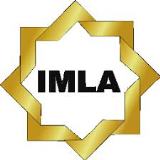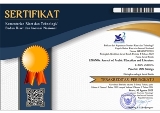Challenges and Opportunities for Learning Arabic: Insights from Non-native Students in Indonesian Higher Education
DOI:
https://doi.org/10.18326/lisania.v9i1.95-111Keywords:
Challenges, Opportunities, Arabic Learning, Non-native StudentAbstract
This study investigates the challenges and opportunities faced by non-native students in Indonesia in learning Arabic. With a focus on the context of higher education, this study uses a qualitative approach to analyze students' experiences in facing obstacles that may arise during the Arabic learning process. Data were collected through in-depth interviews and observations, enabling a deep understanding of the dynamics of Arabic language learning among non-native students. The results of this study provide an overview of challenges such as vocabulary acquisition, speech, and language environment, as well as differences in language structure. Meanwhile, it also identifies opportunities such as the development of cross-cultural communication skills and the strengthening of academic skills. The implications of these findings could provide a foundation for the development of more effective curriculum and learning strategies to support non-native students in overcoming challenges and taking advantage of opportunities in Arabic language learning.
References
Abdurrahman, M., Suherman, A., Masor, M., & Fadhlillah, A. M. I. (2015). Tantangan Guru Bahasa Arab Madrasah Aliyah Dalam Perspektif Kompetensi Pedagogik Dan Profesional. Arabiyat: Jurnal Pendidikan Bahasa Arab dan Kebahasaaraban, 2(1), 43-58. https://doi.org/10.15408/a.v2i1.1513
Asta, B., & Teresevičienė, M. (2018). Challenges of Foreign Language Teaching and Sustainable Development Competence Implementation in Higher Education. Vocational Training Research and Realities, 29(1), 44–56. https://doi.org/10.2478/vtrr-2018-0004
Evi Nurus Suroiyah, & Dewi Anisatuz Zakiyah. (2021). Perkembangan Bahasa Arab di Indonesia. Muhadasah: Jurnal Pendidikan Bahasa Arab, 3, 60–69. https://doi.org/10.51339/muhad.v3i1.302
Hidayah, N. (2020). Peluang Dan Tantangan Pemerolehan Bahasa Arab Sebagai Bahasa Kedua (Kajian Pskolinguistik Pada Pembelajaran Bahasa Arab). 5(2), 65–76. https://doi.org/10.19109/taqdir.v5i2.4922
Hua, T.-L. (2020). Understanding the Learning Challenges of English-Medium Instruction Learners and Ways to Facilitate Their Learning: A Case Study of Taiwan Psychology Students’ Perspectives. Latin American Journal of Content and Language Integrated Learning, 12(2), 321–340. https://doi.org/10.5294/laclil.2019.12.2.6
Luu, N. Q. H. (2021). Teaching English Online at a Center for Foreign Languages: Challenges and Opportunities. Can Tho University Journal of Science, 13(1), 57-65. https://doi.org/10.22144/ctu.jen.2021.007
Madalińska-Michalak, J., & Bavli, B. (2018). Challenges in teaching English as a foreign language at schools in Poland and Turkey. European Journal of Teacher Education, 41(5), 688–706. https://doi.org/10.1080/02619768.2018.1531125
Maghfurin, A., Nasikhin, N., Hasanah, S., Wibowo, A. B., & Naifah, N. (2025). Mobile Assisted Learning in Arabic Language Education: The Impact of Duolingo and Memrise on Phonology, Morphology, and Syntax Competencies. Innovation in Language Learning and Teaching, 1–23. https://doi.org/10.1080/17501229.2025.2490110
Marpuah, S. (2019). The mastery of Arabic language communication with communicative active method. Humanities & Social Sciences Reviews, 7(3), 484–490. https://doi.org/10.18510/hssr.2019.7371
Masud, M. K., & Anis, U. (2020). Model Kampung Arab Santri Bidik Misi Ma‘had Al-Jami’ah: Adopsi Dan Adaptasi Kampung Arab Pare Kediri. Alsina Journal of Arabic Studies, 2(1), 33. https://doi.org/10.21580/alsina.2.1.5947
Primaningtyas, M., & Setyawan, C. E. (2019). Urgensi bahasa arab dalam pendidikan islam di era revolusi industri 4.0. SALIHA: Jurnal Pendidikan Islam, 2(2), 49-66. https://doi.org/10.54396/saliha.v2i2.29
Muassomah, M. (2023). From Global Language Use to Local Meanings: Arabic to Indonesian Absorption. Iasjol, 1(1), 16–29. https://doi.org/10.62033/iasjol.v1i1.10
Muchsonny, M., Rahman, F., & Hidayatullah, R. (2021). The Study of Bilingual Milieu Toward the Student’s Speaking Performance at Modern Boarding School. Journal of English Development, 45–52. https://doi.org/10.25217/jed.v1i01.1431
Munip, A. (2020). Tantangan dan prospek studi bahasa arab di Indonesia. Al Mahāra: Jurnal Pendidikan Bahasa Arab, 5(2), 301-316. https://doi.org/10.14421/almahara.2019.052.08
Mustofa, M. A. (2018). Interferensi bahasa Indonesia terhadap bahasa arab. An Nabighoh, 20(02), 139-161. https://doi.org/10.32332/an-nabighoh.v20i02.1275
Nasir, A. (2022). Pembelajaran Bahasa Arab Untuk Calon Tenaga Kerja Indonesia (CTKI) Ke Timur Tengah. Syntax Literate Jurnal Ilmiah Indonesia, 7(2), 503. https://doi.org/10.36418/syntax-literate.v7i2.6279
Nur, S. (2018). Problematika linguistik (ilmu al-lughah) dalam penerjemahan bahasa Arab ke bahasa Indonesia. Al Qalam: Jurnal Ilmiah Keagamaan dan Kemasyarakatan. https://doi.org/10.35931/aq.v0i0.52
Nurcholis, A., & Hidayatullah, S. I. (2019). Tantangan Bahasa Arab Sebagai Alat Komunikasi Di Era Revolusi Industri 4.0 Pada Pascasarjana IAIN Tulungagung. Arabiyatuna: Jurnal Bahasa Arab, 3(2), 283-298. https://doi.org/10.29240/jba.v3i2.999
Nurcholisho, L. R. (2020). Perubahan Bentuk dan Makna Bahasa Arab Mesir. Lisanan Arabiya: Jurnal Pendidikan Bahasa Arab, 4(2), 257-275. https://doi.org/10.32699/liar.v4i2.1585
Pérez-Valverde, C., Cecilia, R. R., Medina-Sánchez, L., & Ojeda, J. R. G. (2021). Coping With Challenges in Teaching Foreign Languages to Children with Mild Intellectual Disabilities: Stakeholders’ Perspectives. Mathematics, 9(8), 906. https://doi.org/10.3390/math9080906
Sabbah, S. (2015). Is standard arabic dying? Arab World English Journal (AWEJ), 6(2), 54–65. https://doi.org/10.24093/awej/vol6no2.4
Sa'diyah, H., & Abdurahman, M. (2021). Pembelajaran Bahasa Arab di Indonesia: Penelitian Terhadap Motivasi Belajar Bahasa Asing. Lisanan Arabiya: Jurnal Pendidikan Bahasa Arab, 5(1), 51-69. https://doi.org/10.32699/liar.v5i1.1665
Satrio, S. (2018). Urgensi Penguasaan Bahasa Arab Dalam Studi Islam Di Indonesia. Perada, 1(2), 163-177. https://doi.org/10.35961/perada.v1i2.22
Saud, S., Basri, M., Ramly, R., Abduh, A., & Patak, A. A. (2020). Using Online Resources Technology for Foreign Language Learning: Strategies, Impact, and Challenges. International Journal on Advanced Science Engineering and Information Technology, 10(4), 1504–1511. https://doi.org/10.18517/ijaseit.10.4.11838
Siddiq, M. (2017). Pembelajaran bahasa arab di Pondok Pesantren Darunnajah Jakarta (studi etnografi). Al-Ma’rifah, 14(2), 24-36. https://doi.org/10.21009/almakrifah.14.02.02
Supriadi, A., Akla, A., & Sutarjo, J. (2020). Problematika Pengajaran Bahasa Arab Di Madrasah Aliyah. An Nabighoh, 22(02), 211-230. https://doi.org/10.32332/an-nabighoh.v22i02.2314
Yamashita, J. (2020). What Makes Difficult to Keep Learning Japanese? Demotivational Factors Affecting on Indonesian University Students. Japanedu Jurnal Pendidikan Dan Pengajaran Bahasa Jepang, 5(1), 1–8. https://doi.org/10.17509/japanedu.v5i1.25347
Yasmadi, Y., Husna, I., Arsya, F., Rahmah, A., Kustati, M., & Perrodin, D. D. (2024). Insights From a State Islamic University on Arabic Education as a Catalyst for Religious Moderation in Indonesia. International Journal of Language Education, 8(3). https://doi.org/10.26858/ijole.v8i3.66496
Zainollah, Z., & ali, A. R. (2021). Pendidikan Bahasa Asing di Pondok Pesantren Mambaul Ulum Bata-Bata Pamekasan. Kariman Jurnal Pendidikan Keislaman, 9(1), 85–102. https://doi.org/10.52185/kariman.v9i1.172
Zainuri, M. (2019). Perkembangan Bahasa Arab di Indonesia. Tarling: Journal of Language Education, 2(2), 231-248. https://doi.org/10.24090/tarling.v2i2.2926
Downloads
Published
Issue
Section
License
Copyright (c) 2025 Muassomah Muassomah, Arief Rahman Hakim, Mohd Firdaus bin Yahaya

This work is licensed under a Creative Commons Attribution-NonCommercial-ShareAlike 4.0 International License.






